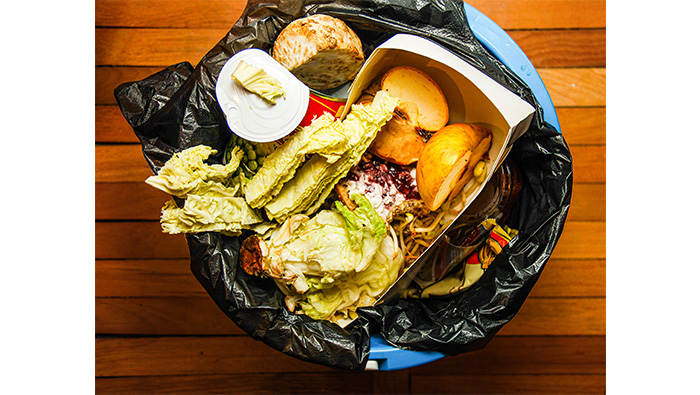

Muscat: Plastic dominates the volume of recyclable waste produced in the Sultanate of Oman with around 2.3 million tonnes generated annually. If the waste can be recycled locally, revenues worth OMR530 million can be generated annually, according to a study published by be’ah (Oman Environmental Services Holding Company) as part of the company’s Sustainability Report for 2022.
The study revealed that plastic dominates the list of most harmful wastes to the environment; as it stays in the environment for a long time and contains non-degradable chemicals, thus affecting the ecosystem.
The impact of plastics goes beyond damaging the soil, and groundwater or surfacewater, due to its potential to impact organisms in the marine environment such as plants or fish that feed on or are affected by these plastics. be’ah has called for key initiatives to help decrease the impact of plastic. Among them is recycling it or using environmentally friendly alternatives and increasing awareness among the society about the impact of plastic to the environment.
Having built the foundation for a solid and sustainable waste management system, be’ah’s core strategies, moving forward, have shifted focus towards adopting a circular economy model and gradually doing away with the traditional linear economy model.
The circular economy model is aimed at reducing the rate of consumption of natural resources by extending the average lifecycle of materials and goods.
By adopting the circular economy model, be’ah aims to reduce the waste management industry’s impact on the environment and more importantly, influence the economy positively and contribute towards achieving Oman’s Vision 2040 targets.
be’ah said the volume of circular economy investments in the Sultanate of Oman is estimated to be at about OMR 577 million.
The company called upon people to think twice before using plastics and urged them to replace plastic with biodegradable and reusable materials. More importantly, care and caution need to be used in disposing of plastic waste to avoid harm to the environment.
As part of the national efforts to reduce the use of plastic and reduce plastic waste, a Ministerial Resolution No. 23/2020 was issued by the Environment Authority regarding the ban on the use of single-consumer plastic shopping bags which comes in implementation of the provisions of the Environment Protection and Pollution Control Law No. 114/2001. The rule is meant to achieve the goals of sustainable development and follow-up the national action plans for the management of plastic products and their waste.
The municipal legislation and regulations also took into account the issue of maintaining public cleanliness, with the aim of preventing practices that would harm the environment and people in general, as stated in Article (11) of the local order for public health protection No. 1/2006 prohibiting throwing, leaving, putting, liquid or excreting or burning any waste in public places or disposing of it in places other than the disposal sites specified by the municipality. This waste also includes plastic waste.
Municipal laws have also tightened penalties for violators, including administrative penalties for violations of the Muscat Municipality by paying a fine of OMR100 for those who dispose of waste in places other than those designated for it.
Circular economy
The concept of the circular economy comes in line with the objectives of Oman Vision 2040 to preserve the value of environmental resources, which in turn goes beyond the concept of a linear economy that focuses on extraction, manufacturing and disposal only, as the government has sought to attract investments and offer a number of investment opportunities to advance the waste management sector.
It would contribute to reducing health and environmental problems, reduce pollution, and improve the pattern and system of waste collection.
In a new plastics economy, plastic never becomes waste or pollution. Three actions are required to achieve this vision and create a circular economy for plastic.
Eliminate all problematic and unnecessary plastic items. Innovate to ensure that the plastics we do need are reusable, recyclable, or compostable. Circulate all the plastic items we use to keep them in the economy and out of the environment.
Social responsibility
Some sound practices may make a difference to solve the problem of plastic waste accumulation and reduce its spread, based on the belief of community members in their role and their individual and societal responsibility towards the environment of which they are a part and the vital system on the planet.
Adopting optimal and effective management of waste by reducing the use of unnecessary plastic materials in daily life, and even thinking seriously before buying plastic materials and replacing them with other materials that can be degraded and reused or disposed of without causing harm to the environment.
On the other hand, adopting creative methods of recycling and reusing things would contribute to reducing the accumulation of waste, in particular plastic, and the use of companies specialised in recycling.
Plastic the main culprit
According to the UN Environment Programme (UNEP) report ‘From Pollution to Solution’, plastics are the largest, most harmful and persistent fraction of marine litter, accounting for at least 85 per cent of the estimated 11 million metric tons of plastic currently entering the ocean annually will triple in the next twenty years.
This means that between 23 and 37 million metric tonnes of plastic will flow into the oceans every year by 2040. That is equivalent to 50 kilograms of plastics per metre of coastline worldwide.
Humans are also at risk from marine plastic pollution. Environmental health is inextricably linked to human health. The pervasiveness of microplastics across our planet raises serious concerns for people’s safety. New research shows that people are inhaling microplastics through the air, consuming them through food and water and even absorbing them through the skin. Microplastics have even been found within our lungs, livers, spleen, and kidneys, and one study recently found microplastics in the placentas of newborn babies.